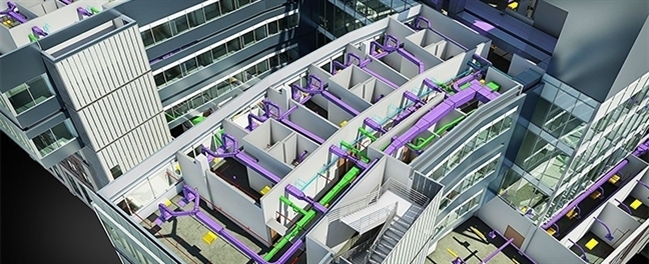
Commercial use of Computer-Aided Design (CAD) programs began in the 1980s. It became widespread in our country and replaced the T square in the 1990s. As computer technology evolved and became cheaper, the use and capabilities of the CAD programs evolved in parallel. The CAD programs, being a revolution in design, now have to be part of the new revolution. Design is now four, five or even six dimensions, the CAD programs continue to provide the first three dimensions of this, but provided that it is compatible with other dimensions.
Well, what is this BIM? Basically, we can say that a virtual copy of the designed structure is created in the computer environment and the virtual copy survives with the structure as long as the structure survives, that is, until it completes its economic life and is destroyed. The benefits offered by the BIM, which is the abbreviation of Building Information Modeling, are extraordinary. In order to describe the project management processes, there is a drawing of a swing attached to a legendary tree that we all know, which continues as the drawing the customer wants, the architect draws, the master builds, and a freak that is useless emerges at the end. The BIM application comes into play right here and is used at every stage of the process to ensure that all stakeholders of the project understand each other.
As we mentioned earlier, the BIM goal is to move design to the fourth dimension and beyond. Our first three dimensions are the X, Y and Z axes in the CAD programs. But a standard three-dimensional CAD drawing is not adequate for the BIM. It is necessary to convert three dimensional drawings into smart objects. Points, lines, and surfaces in the design should come together to form objects, then have a database in which each object's characteristics are defined. Each smart object is no longer a point, line or surface; it is the wall, door, window, pipe, duct, cable …. whatever we need in a building design.
Using smart objects, a virtual copy of the designed structure is created. And each smart object knows where it is and its mission in this virtual copy. The rules of use will also be registered in the database where the features of smart objects are registered, and therefore, designs that do not comply with the rules will not be made. For example, when a three-dimensionally drawn fire detector is converted into a smart object, it will know that it is a fire detector, as well as that other smart objects around it are walls, beams, lighting fixtures or ventilation vents. Since the distance between the database and each smart object is recorded, the distance from the point where it is placed in the design to other smart objects will be calculated and the designer will be informed about improper situations. When all stakeholders of the design work are on the same platform by using smart objects, it will be possible to perform work with zero error. With today's computer technology and communication opportunities, it is quite easy to assure this.
Working together in the virtual world is possible if there is a database to share. The fourth and subsequent dimensions are also formed by the integration of smart object databases with the databases of other disciplines, and how many dimensions there will be is up to you.
Let's list a few of them here: The progress of the time-dependent project can be visualized by integrating it with a project management program. Now that we know the project progress times, we also know which materials we will need and when we will need them. By integrating the financial management program, we can also predict how much money we will need on which date. By integrating it into the human resources management program, we can also predict when and how many personnel we will need. At the end of the project, we can integrate it into the business management software and enable the operator to manage the building in real time through three-dimensional graphics. By integrating project management, finance, human resources and business programs, we have increased our design to 7 dimensions.